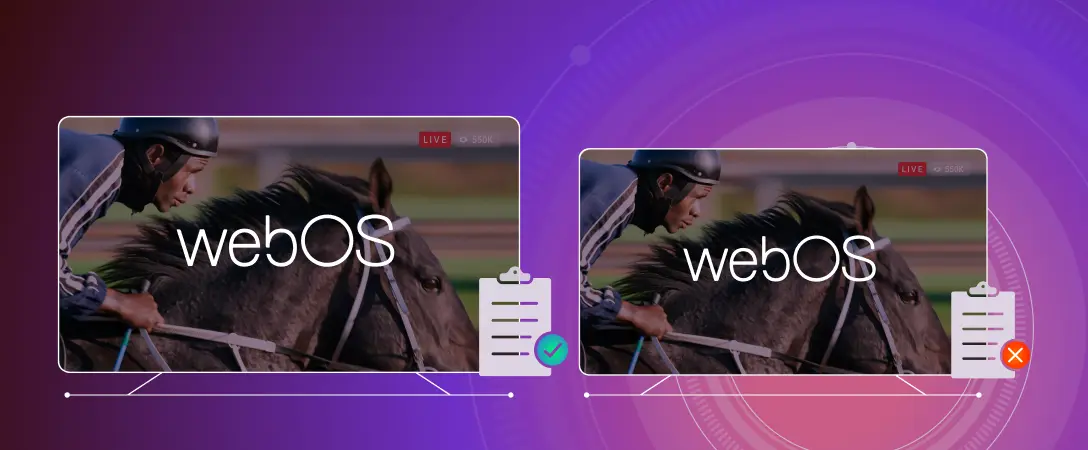The TV and broadcasting sector in the United States has experienced quite a change over the past decade. The FCC introduced new standards and legislation on closed captions for broadcasters and online publishers. These requirements can make media publishers’ jobs more challenging if they don’t have the right tools.
In this guide, we will break down the FCC requirements for closed captioning. We’ll talk about what this means for online video publishers and discuss technology that makes it easy to distribute compliant content.
What are FCC regulations?
The Federal Communications Commission (FCC) oversees the nationwide communications via radio, television, wire, satellite, and cable in the United States. The FCC maintains standards among media and communication methods while protecting consumer and business interests.
To achieve this goal, the commission enforces FCC regulations that apply to all content publishers in the US. Violators face fines and administrative judgments, which may amount to several million USD.
The FCC regulations include manufacturing standards, decency standards, and competition.
FCC closed captioning requirements
A few years back, the FCC restructured regulations to ensure accessibility. They published four rules that ensure quality standards for closed captions across platforms.
1. Caption accuracy
The FCC requires captions to match spoken words in the dialogue in the original language with absolute accuracy. This means captions must display the words in spoken order without rephrasing and use correct spelling, spacing, capitalization, and punctuation. Besides that, they must also reflect sound effects and music in the audio track to the greatest extent.
2. Caption synchronicity
Captions under FCC regulation are required to coincide with the corresponding dialogue and sounds. They must be displayed at a pace that is readable for the viewer.
3. Program Completeness
To guarantee a complete experience, captions must be displayed from the beginning to the end of the program.
4. Caption placement
Captions should be placed in a position that keeps all important information visible. Therefore, captions may only be placed so they do not block other visual content on the screen (e.g., featured text, graphics, credits, or other crucial information).
The impact of FCC regulations on online video
Online content previously seen on TV must comply with the new FCC standards, which will also greatly improve the caption quality.
Another significant factor to consider when dealing with online video content is the FCC mandate for better customization of closed captions. As of the beginning of 2014, online program distributors must provide CEA-708-compliant captions that enable users to control the look and feel of captions.
Users can set font type, size, color, opacity, window color, and edging style. This makes online content much more customizable and, therefore, accessible to vision-impaired viewers.
The challenges of FCC regulations for online video publishers
To comply with the FCC standards and regulations, broadcasters must provide original-language closed captions with every content broadcast. This includes English, Spanish, and English-Spanish content. Captions must comply with the quality standards to prevent fines and penalties.
Since online video providers are now required to caption all their content previously shown on television in the United States, they must supply captions that can be played on all platforms and devices. Plus, content owners must have a closed captioning certification to comply with FCC regulations to confirm their compliance with FCC standards.
Publishers should consider captions an opportunity to improve the user experience in addition to complying with the regulations.
The bottom line is that online video publishers need support for CEA-608/708 captions to meet all the requirements. They must ensure fast and reliable live captioning and consistent monitoring to address issues and problems as quickly as possible.
FCC-compliant captions with Dolby OptiView Player
To stay fully compliant and avoid fines, companies must look for a solution that helps them become FCC-compliant as soon as possible. Fortunately, Dolby OptiView Player (formerly THEOplayer) supports closed captions on desktop and mobile, making it easy for broadcasters and online publishers to meet the FCC closed captioning requirements on all platforms and devices.
OptiView Player’s world-class support for CEA-608 captions for live, DVR, and VOD content is an easy-to-implement solution. The player’s CEA-608 closed captions work on all devices and platforms, including mobile web on iOS, Android, and Windows smartphones.
Plus, Dolby OptiView Player automatically detects when there are captions embedded in the stream and plays them back without additional configuration. Captions are simple to control, and viewers can switch smoothly between languages.
Contact us to learn more about how our video player can support you in making your online content compliant and more accessible.








